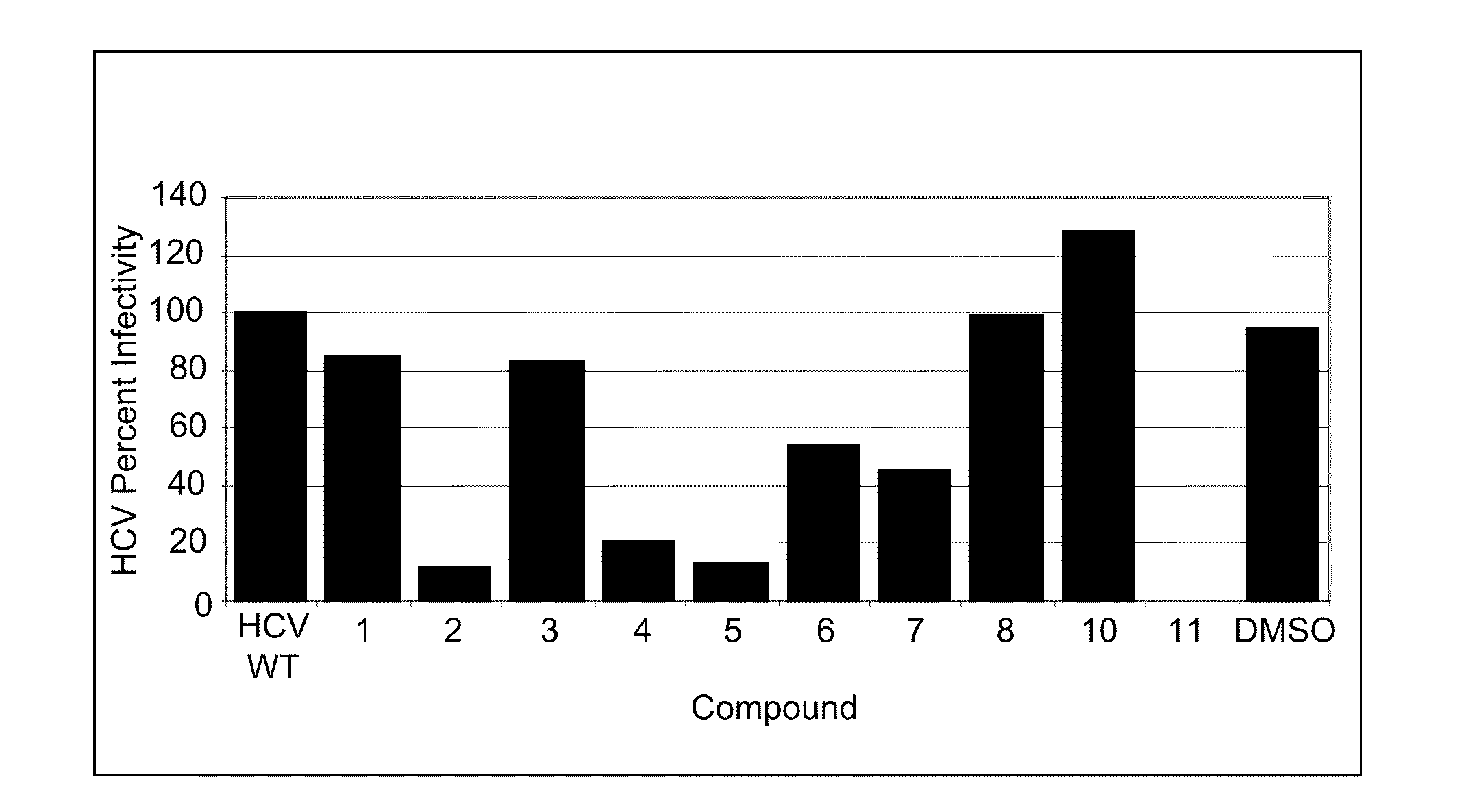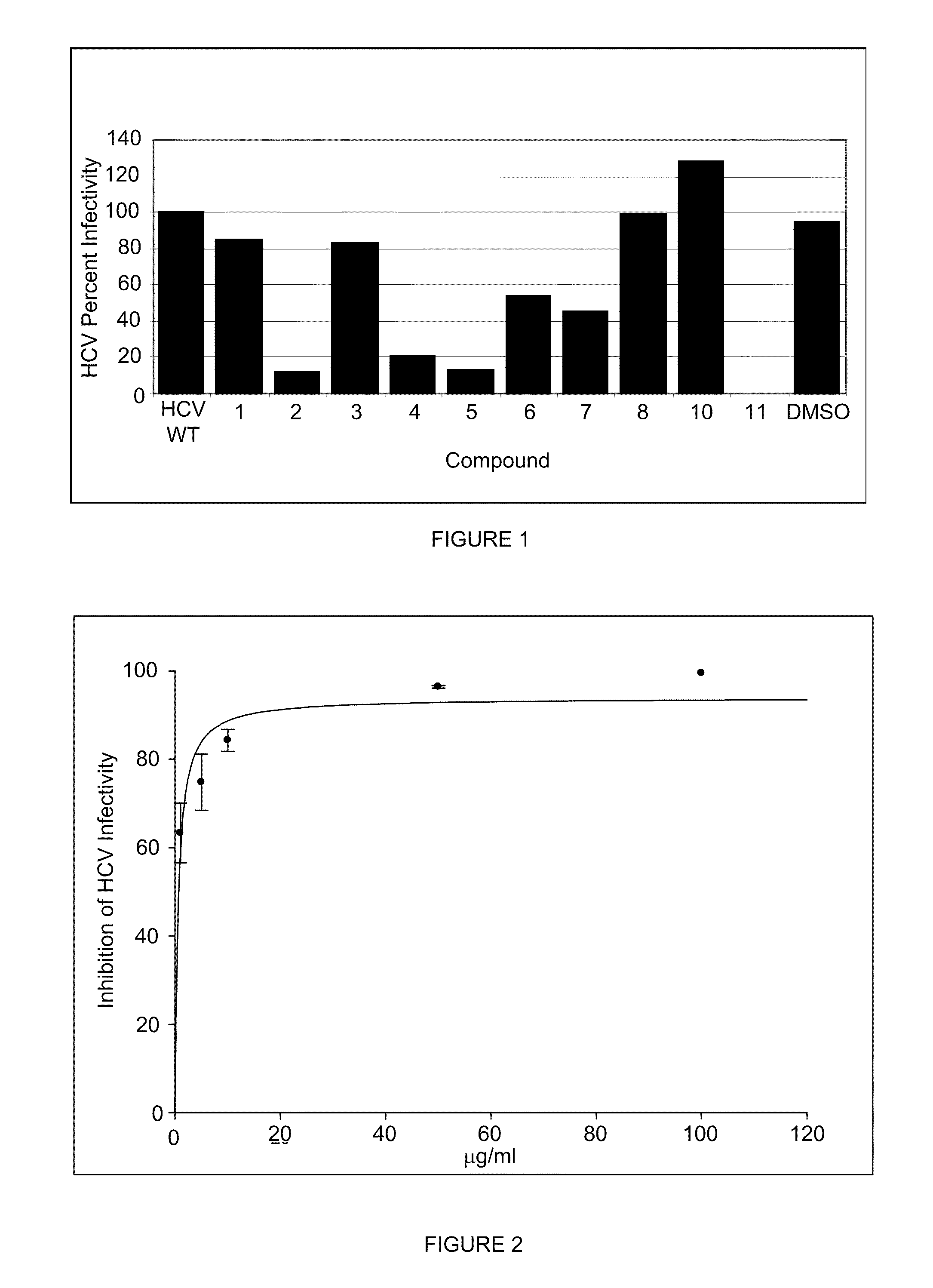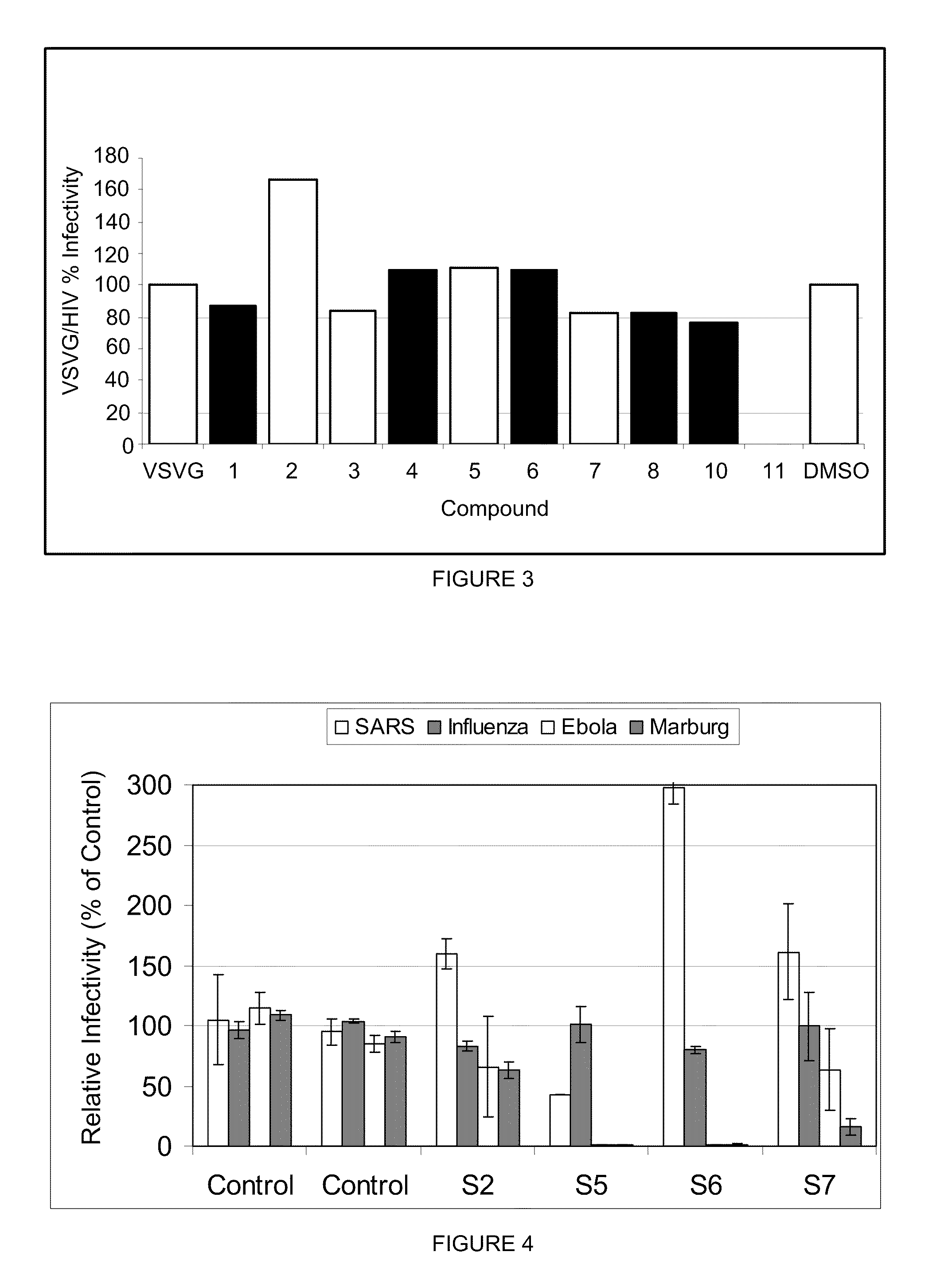Compositions and methods for treatment of liver disease
- Summary
- Abstract
- Description
- Claims
- Application Information
AI Technical Summary
Problems solved by technology
Method used
Image
Examples
example 1
Assay and Protocols for Anti-HBSAg Assay (Procedure A)
[0102]The HBV-producing human hepatoblastoma cell line, Hep G2.2.15 was maintained in DMEM supplemented with 10% fetal bovine serum (FBS), 2 mM glutamine, 100 units / ml penicillin, 100 μg / ml streptomycin and 380 μg / ml gentamicin sulfate (G418) at 37° C. under 5% CO2 in air. The Hep G2 parental cells were grown under identical conditions in MEM with Earle's salts without G418.
[0103]Hep G2.2.15 cells (190 μl) were seeded onto microtiter plates at a concentration of 20×104 cells / ml. The cells incubated overnight in medium without G418 after which the compound compositions (10 μl) were added. Five 2-fold serial dilutions of extracts or fractions were tested starting at 200 μg / ml final culture concentration. PBS and 3TC (lamivudine) were included as the negative and positive controls, respectively. The treated cells were incubated at 37° C. for 4 days, after which the hepatitis B surface antigen (HBsAg) production in culture supernatan...
example 2
Anti-HBSAg Assay (Procedure B)
Cell Culture
[0105]The HBV-producing human hepatoblastoma cell line, Hep G2 2.2.15 is maintained in DMEM supplemented with 10% fetal bovine serum (FBS), 2 mM glutamine, 100 units / ml penicillin, 100 μg / ml streptomycin at 37° C. under 5% CO2 in air.
[0106]Samples were dissolved in DMSO at the concentration of 20 mg / mL, then further diluted with DMEM medium to the appropriate concentration.
Cytotoxicity Assay
[0107]Hep G2 2.2.15 cells (120 μl) were seeded onto 96-well plates at a concentration of 2×105 cells / mL. After incubation for 72 h, serial dilutions of the test samples were added to monolayer Hep G2 2.2.15 cells, and culture at 37° C. in a humidified atmosphere of 5% CO2 in air for an additional 9 days, and the medium with sample was changed every 3 days, 10 μL 10% aqueous DMSO was used as control group. After incubation, the supernatant was taken out and 90 μL of DMEM and 10 μL of the 5 mg / ml MTT (3-[4,5-dimethylthiazol-2-yl]-2,5-diphe...
example 3
Analysis of Lamiridosin for Other Antiviral Activities
[0111]The aims of this example are to analyze the anti-viral spectrum of lamiridosin against other viruses.
Experimental Design:
[0112]The four test substances was subjected to analysis for their ability to inhibit the entry (infectivity) of the influenza, Marburg, Ebola, and SARS virus entry assays at a dose of 100 μg / mL. The anti-HIV effect was tested separately in the HOG.R5 assay.
Results:
[0113]These assays were completed and the results summarized in the FIG. 4. Lamiridosin (S2 in FIG. 4), at 50 mg·mL, is inactive against influenza, Marburg, SARS, Ebola, and HIV (inactive against the HOG.R5 assay at 20 mcg / ml).
PUM
| Property | Measurement | Unit |
|---|---|---|
| Pharmaceutically acceptable | aaaaa | aaaaa |
Abstract
Description
Claims
Application Information
 Login to View More
Login to View More - R&D
- Intellectual Property
- Life Sciences
- Materials
- Tech Scout
- Unparalleled Data Quality
- Higher Quality Content
- 60% Fewer Hallucinations
Browse by: Latest US Patents, China's latest patents, Technical Efficacy Thesaurus, Application Domain, Technology Topic, Popular Technical Reports.
© 2025 PatSnap. All rights reserved.Legal|Privacy policy|Modern Slavery Act Transparency Statement|Sitemap|About US| Contact US: help@patsnap.com



